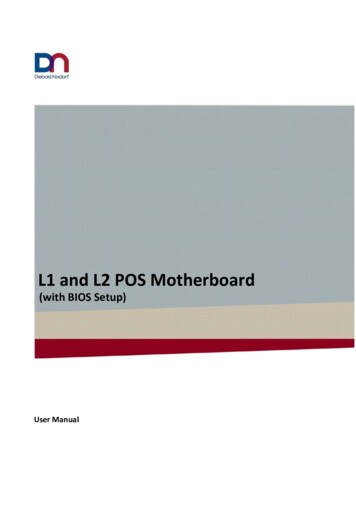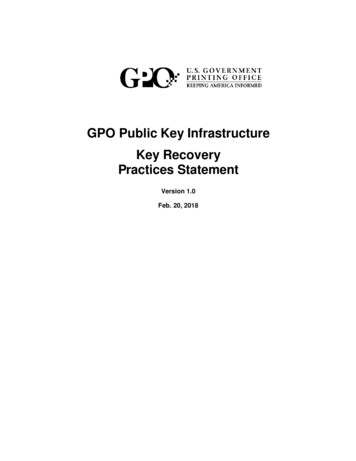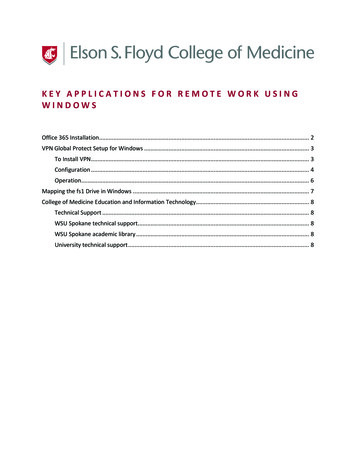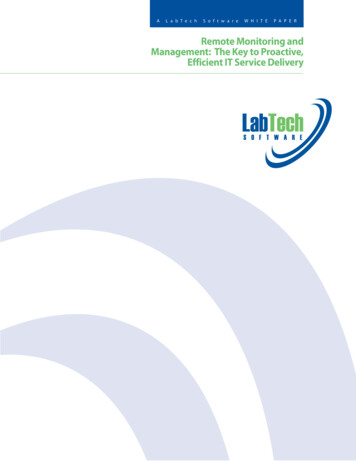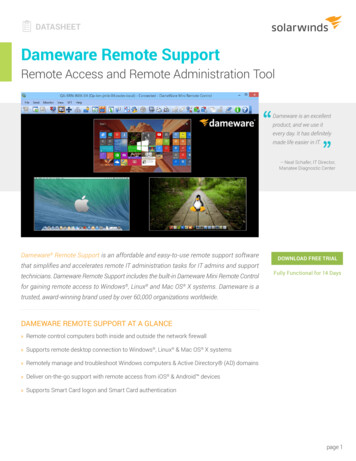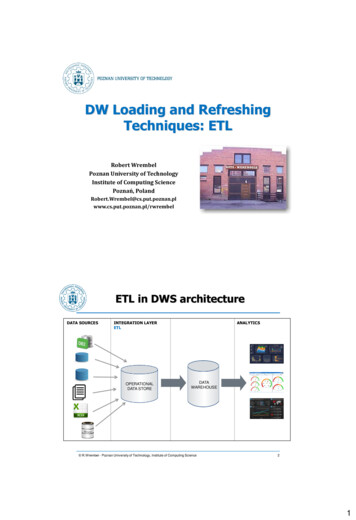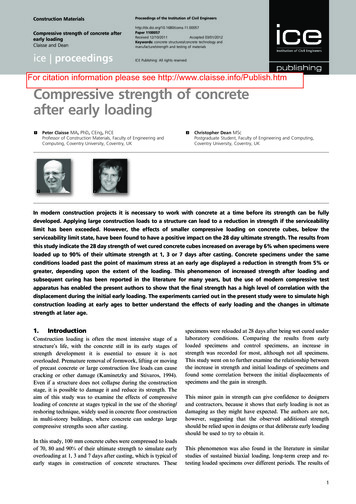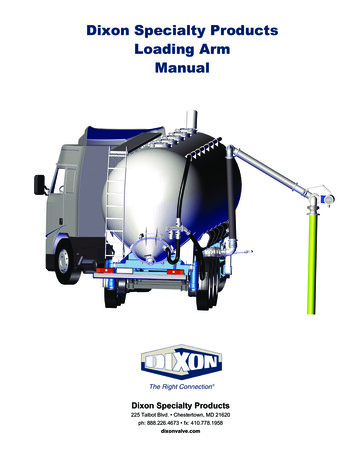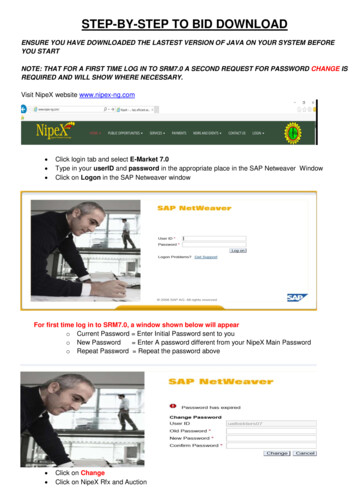
Transcription
Remote Key LoadingDecoding RKL
What is Remote Key Loading (RKL)?Discover the power of our industry-leading Remote Key Loading (RKL) solution, and find out howyour financial institution (FI) will benefit from a secure, compliant, efficient and universal solutionthat can be seamlessly implemented across a diverse ATM fleet. RKL is the process of distributinga terminal master key from a central administration point to an Encrypted PIN Pad (EPP) or PINEntry Device (PED).WHAT ARE KEYS?Keys are essentially strings of numbers that allow you to takeinformation, secure it, then transmit it. That information can onlybe decrypted when a private key is entered. The secrecy of keys iscritical for ensuring security and protecting information. That’swhy there are public and private keys. The public key essentially“unlocks” the private key, which is further enhanced by securitychecks. And, there are multiple keys to create an intentionallycomplex code so ATMs cannot be tampered with during the keyloading process.RKL HOST INTEGRATIONCHECK EPPSERIAL NUMBER3DES (ZONE KEY)ATM INITIAL KEYHOSTSWITCHDIEBOLD NIXDORFRKL SERVERCARDTRANSACTIONRKLREQUESTSWHY USE RKL?Before RKL, a two-person team had to physically load new keys.That means one technician arrived on the scene with half of thekey, and programmed the key into the ATM EPP or PED. Then,another technician physically plugged in the other half of the keycode. This two-person manual key loading might have been asecure process before—but not in today’s 24/7 environment.Manual key loading opens up opportunities for fraud and errors.(After all, the process is performed by humans.) Manual key loading creates security gaps. It’s costly and time-consuming as financial institutions (FIs)must depend on two technicians to complete the process.2 Remote Key LoadingATM
RKL Streamlines and Securesthe Key-loading Process.RKL allows the master key to be distributed from a central administration point directly to the EPPor PED. Code keys are sent between the central processing center and ATM.RKL improves operating efficiency—It decreasesATM downtime.RKL enhances security, guarding ATMs against tampering.RKL is more convenient for consumers and FIs—it ensuresmore uptime, greater security and improved efficiency.3 Remote Key Loading
RKL Advances & ChallengesMANAGING MULTIPLES(ATMS, MANUFACTURERS, MODELS)Because of RKL’s clear benefits, it has become the standardmethod across the globe for loading new ATM keys. Many ATMmanufacturers offer RKL capabilities—but their solutions arelinear and focused on their brand and their system. This ischallenging because FIs are “managing multiples”: Diverse, multi-vendor ATM fleets with machines frommultiple manufacturers ATM fleets with a multiple models from a single manufacturer Multiple vendors that service an ATM fleetWith all these variables at play, how effectiveare your ATM manufacturer’s RKL capabilities?RKL CLASSES & PROTOCOLSThere’s another layer that can make RKL complicated tounderstand and implement: RKL protocols fall into one of twoclasses—signature-based or certificate-based—and vendors mayhave multiple RKL protocols all based within the same class.Signature-BasedThis protocol has a digital signature. It’s a simpler data structureusing a code key that encrypts the digital key. The digital key issent to an encrypted PIN pad. The PIN pad decodes the key anduses security checks to prevent fraud.Certificate-BasedThis protocol uses certificates to transmit information ratherthan using keys. Certificates involve more information thana signature-based protocol. More data is sent at a time viacertificate. This solution is not ideal for dial-up networks. Theindustry-standard TR-34 RKL protocol is certificate based.With two different RKL classes, an FI mighthave ATMs in its fleet that are signature-basedand certificate-based, and different types ofprotocols within each class, which all requiredifferent RKL solutions. Our solution supportsboth classes.4 Remote Key LoadingDecoding RKLKey Take-Away:RKL is a remote method of distributingmaster keys that encrypt informationvs. the old two-person manual keyentry process. It’s more efficient, secure,convenient and cost-effective. There aredifferent protocols for RKL, dependingon the provider. RKL is generallyplatform independent because RKLcapabilities lie within the encryptedPIN pad and host, not with the ATM.
The Diebold NixdorfRemote Key Loading SolutionThe RKL Solution by Diebold Nixdorf addresses the challenge of “multiples” with a multi-vendorsolution that uses signature/certificate techniques specified by ANSI standards. This allows for mutualauthentication between the RKL server and EPP, and a secure session for the Initial Key Transport.KEY BENEFITS It’s universal. It can be implemented across ATM fleets withterminals from multiple manufacturers, different models andvarious vendors. It’s secure. A central RKL server first communicates the InitialKey to the host (switch). Then the RKL server establishes an initial,secure session for transmitting the Initial Key to the ATM. Fromthen on, the ATM communicates with the host (not the server). Verifies that EPP serial numbers are included in a bank’sinventory before completing a transaction.DECODING RKL: THE DIEBOLD NIXDORF RKLSOLUTION DIFFERENCEOur RKL Solution eliminates costs associated with manual keyloading—there’s no need for staff to transfer keys, or for twoseparate technicians to physically load keys into the EPP or PED.Additionally, our RKL Solution enables bilateral authentication.A secure session is established with the host (switch) before theinitial key is downloaded. And, because it has an RKL protocol forevery ATM manufacturer, RKL Solution is the only Remote KeyLoading answer your organization needs. Communicates directly from the RKL service to ATMs. Requires no intervention from bank staff or technicians if newsoftware is installed or an EPP is decommissioned. An RKLrequest is simply launched again, following the secure protocol. It’s a single solution banks can use for any type of ATM fleetbecause the RKL Service executes a specific RKL protocol forevery ATM manufacturer. Supports non-ATM terminals, including pin-pad payment readers. Enables integration with RKL protocols for either additionalEPP/PED models or new EPP/PED firmware revisions, so FIscan stay compliant with the latest PCI requirements.Explore how the Diebold Nixdorf RKL solution can improve efficiency, boostsecurity and reduce costs. Contact your Diebold Nixdorf representative today.To learn more, visit DieboldNixdorf.com. Copyright 2019 Diebold Nixdorf, Incorporated. All rights reserved. Diebold Nixdorf is a trademark of Diebold Nixdorf, Incorporated. v1.0-022019
a terminal master key from a central administration point to an Encrypted PIN Pad (EPP) or PIN Entry Device (PED). ATM DIEBOLD NIXDORF RKL SERVER HOST SWITCH RKLCARD REQUESTS 3DES (ZONE KEY) ATM INITIAL KEY CHECK EPP SERIAL NUMBER TRANSACTION. 3 Remote Key Loading RKL Streamlines and Secures the Key-loading Process. RKL allows the master key to be
